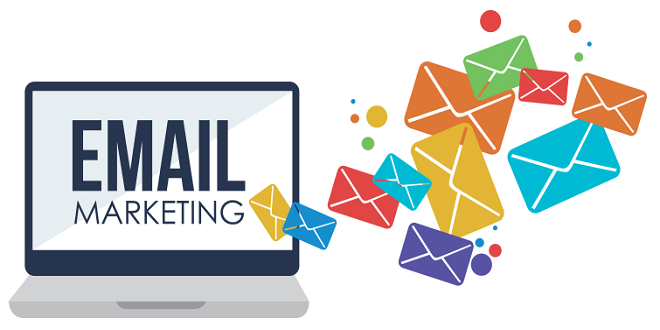Understanding e-mail marketing

The new direct mail
E-mail marketing is one of the most powerful elements in your digital marketing toolbox. It lets you communicate easily with your customers on a personal level through a universally accepted digital medium.
Hank of the junk mail that arrives through your letterbox every day. Most of it gets thrown out, unread and, in many cases, unopened. A scene in the 1991 Steve Martin comedy LA Story depicts the main character, Harris Telemeter, watching a never-ending barrage of junk mail pouring through his letterbox. He nonchalantly kicks a waste-paper basket under the unwanted stream of promotional bunkum and continues eating his breakfast. While exaggerated, it is a scenario that many of us can empathize with – and an apt analogy for what is happening with electronic mail today.
What exactly is e-mail marketing?
E-mail marketing is a fusion of marketing savvy and imaginative copy. In its simplest form, it’s an e-mail sent to a customer list that usually contains a sales pitch and a ‘call to action’. This could be as simple as encouraging the customer to click on a web link embedded in the e-mail. Some examples of e-mail marketing campaigns could include:
- a hotel promoting a special summer discount;
- a recruitment company informing business clients about a free seminar;
- a gadget store offering a money-off code to be used at its online checkout;
- a fitness center offering members a special printout voucher that entitles the bearer to bring a friend along for free;
- a beverage company encouraging people to download a game that integrates into the user’s Facebook profile.
You can also use e-mail when you don’t have anything specific to market, as a mechanism to maintain consumer engagement, strengthen brand perception and add credibility to your business. In fact, even in the Web 2.0 world of blogs, social networks and RSS feeds, e-mail newsletters are still incredibly popular, and offer a very effective way to get your brand out in front of your list of prospects on a regular basis.
E-mail marketing tools
When it comes to managing and sending your marketing e-mail, you probably won’t want to rely on your standard desktop e-mail client to do the job. While it’s a perfectly feasible approach for very small lists, as more people subscribe to your e-mail offering it will quickly become cumbersome and unmanageable.
What you need instead is one of the many custom e-mail marketing systems out there. These can either be software that you install on your local machine, software you run on your own server, or a software-as-a-service (SaaS) offering hosted by an online service provider. These systems let you manage your e-mail list, craft your design templates for your messages and, most importantly, help you to track your e-mail campaigns.
Customer relationship management
It is no good using e-mail marketing tools if you don’t know who you’re sending your e-mails to. Customer relationship management (CRM) is a business concept that has been around for about 25 years. It is the art, if you will, of keeping your customers happy and maintaining an ongoing personal relationship with them. Let’s say you run a small grocery shop in an equally small neighborhood. Over time you’ll get to know your regular customers, their likes and dislikes, and what other products they might be interested in trying, etc. Larger businesses struggle to maintain that sort of personal connection with consumers, and that is where CRM comes in.
Last word
Just in case you hadn’t picked up the vibe, we’ll spell it out: SPAM IS BAD. It is almost certainly against the law in the country you’re operating from, and what’s more it annoys the very people you’re hoping to connect with: your future customers. When you’re just starting out, and don’t have much of an opt-in list, it can be tempting. Don’t do it.





